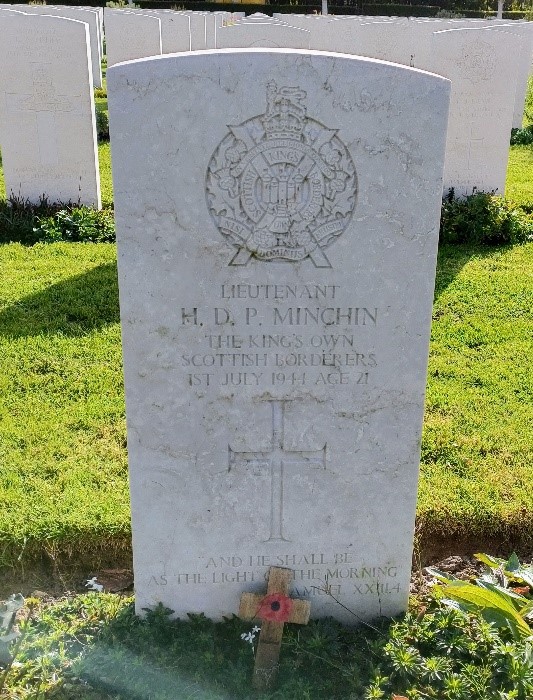In late October Isabel and I enjoyed a holiday on the River Seine in north-west France. One of the highlights of our cruise was an onshore visit to the Bayeux Tapestry Museum. There visitors can view the whole extent of the 70 metres long embroidery, depicting the lead up to the Norman Conquest of England and the decisive Battle of Hastings.
A few minutes’ journey from the Tapestry Museum we were reminded of a much more recent conflict. Bayeux War Cemetery, which was completed in 1952, is the largest Commonwealth cemetery of the Second World War in France. It contains 4,144 Commonwealth burials of the Second World War, 338 of them unidentified. There are also over 500 war graves of other nationalities, the majority German.
It is always moving, poignant, and thought-provoking to visit even the smallest war cemetery or to spot the outline of the familiar military headstone in a country churchyard. At Bayeux the sight of the serried ranks of white Portland stone all around and stretching into the distance almost defies description.
I began reading the inscriptions on the stones near where I was standing. There was a sailor, a soldier from the Hampshire Regiment, an RAF pilot — and then, right in front of me, was a surname I recognised: Minchin. Sufficiently unusual to attract my attention, this name brought back memories. Lieutenant Minchin had served with the 6th Battalion of the Kings Own Scottish Borderers. Could there be a connection with one of my former parishioners in Berwickshire, a Mrs Kathleen Minchin?

Thanks to the very efficient Commonwealth War Graves Commission website (as well-maintained as its many cemeteries), I was able to verify that H D P Minchin was indeed the son of the A A F and Kathleen Winifred Minchin of Cruiksfield, Berwickshire. His name appears on the war memorial in Bonkyl Church, where I was minister for nearly twenty years.
The Battalion had landed in France in the middle of June 1944 and first engaged in action on 26th June, when a number of casualties were sustained. On 1st July the Battalion came under heavy tank fire as part of a German counter-attack. Lieutenant Minchin along with fifteen other members of the Battalion were killed and many more wounded, including a Captain Elliot, whose death in early 1945 is recorded on the war memorial in another church where I was also minister.
If it is hard to grasp the immensity of the losses sustained, even in one operation, let alone a whole war, it may be that by focussing on the loss incurred by one family, we may begin to sense something of what it must have been like for those waiting anxiously for news of loved ones serving far from home, not knowing where they were or what was happening to them, or even if they were still alive. Nearly eighty years on, there can still be connections between then and now.
Rev W. Peter Graham
